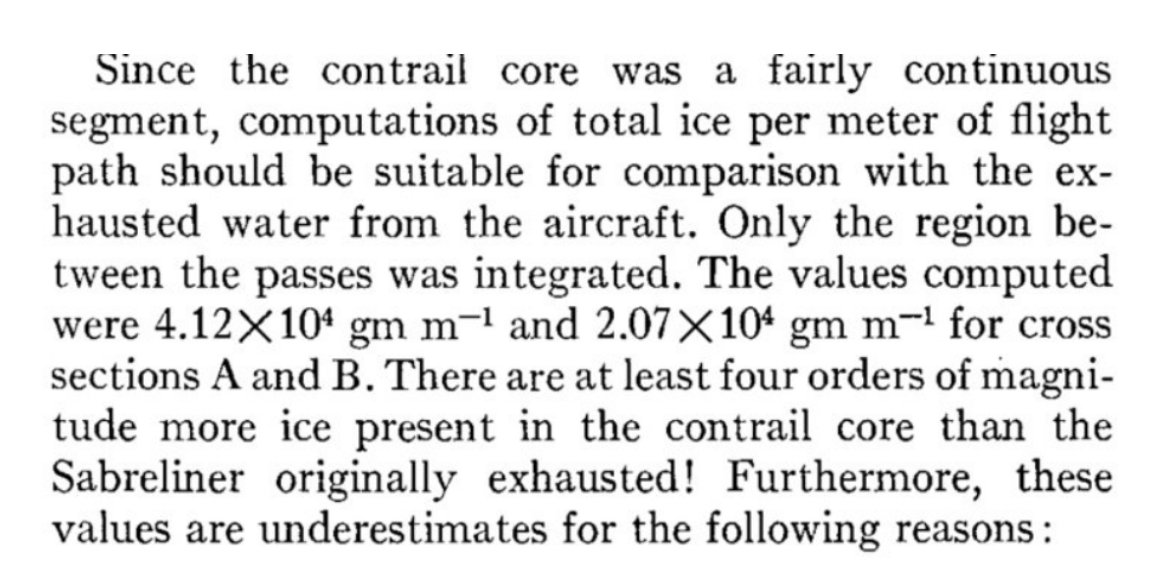If #chemtrails are real, how much “chem” would you need to create them? A thread. (1/9) 

According to the chemtrail theory, what scientists call “persistent contrails” are actually chemtrails. So, first question, what length of persistent contrails is produced globally each day? (2/9)
Not all flights produce persistent contrails. Depending on the region, between 2.2% and 10% of flights produce 80% of all persistent contrails. Let’s call it 5%. (3/9) 

There are approximately 100,000 commercial flights every day. Their lengths vary widely, but if we take a medium-haul flight of 1,000 miles as an average, that makes 100 million miles flown each day. (4/9) 

5% of 100 million miles equals 5,000,000 miles of persistent contrails created, on average each day. If those are really chemtrails, how much material is that? (5/9)
Typical persistent contrails have been measured to have a mass of 30kg per metre, or approximately 53 tons per mile (6/9) 

5,000,000 miles at 53 tons per mile makes 265 million tons of chemicals needed every single day. That’s more than 96 BILLION tons per year. (7/9)
One of the main chemicals chemtrail believers claim is involved is aluminium. World production of aluminium is about 64 million tons per year. (8/9) 

Therefore, in order to produce the world’s supply of chemtrails, you would need approximately 1,500 TIMES the world production of aluminium. Does that add up? (9/9)
Someone said it’s aluminium oxide, not aluminium. OK.
The formula of aluminium oxide is Al2O3.
Al atomic mass = 27.
O atomic mass = 16.
27 x 2 = 54.
16 x 3 = 48.
Total = 102.
Al2O3 is therefore 54/102 = 52.9% aluminium by mass.
So instead of 1500x, make it 793x.
The formula of aluminium oxide is Al2O3.
Al atomic mass = 27.
O atomic mass = 16.
27 x 2 = 54.
16 x 3 = 48.
Total = 102.
Al2O3 is therefore 54/102 = 52.9% aluminium by mass.
So instead of 1500x, make it 793x.
The same logic could apply to any chemical. In fact the chemical produced in the largest quantity globally is sulfuric acid. That is only about 260 million tons per year - or roughly the amount of “chemtrails” produced in one day. 

• • •
Missing some Tweet in this thread? You can try to
force a refresh






















